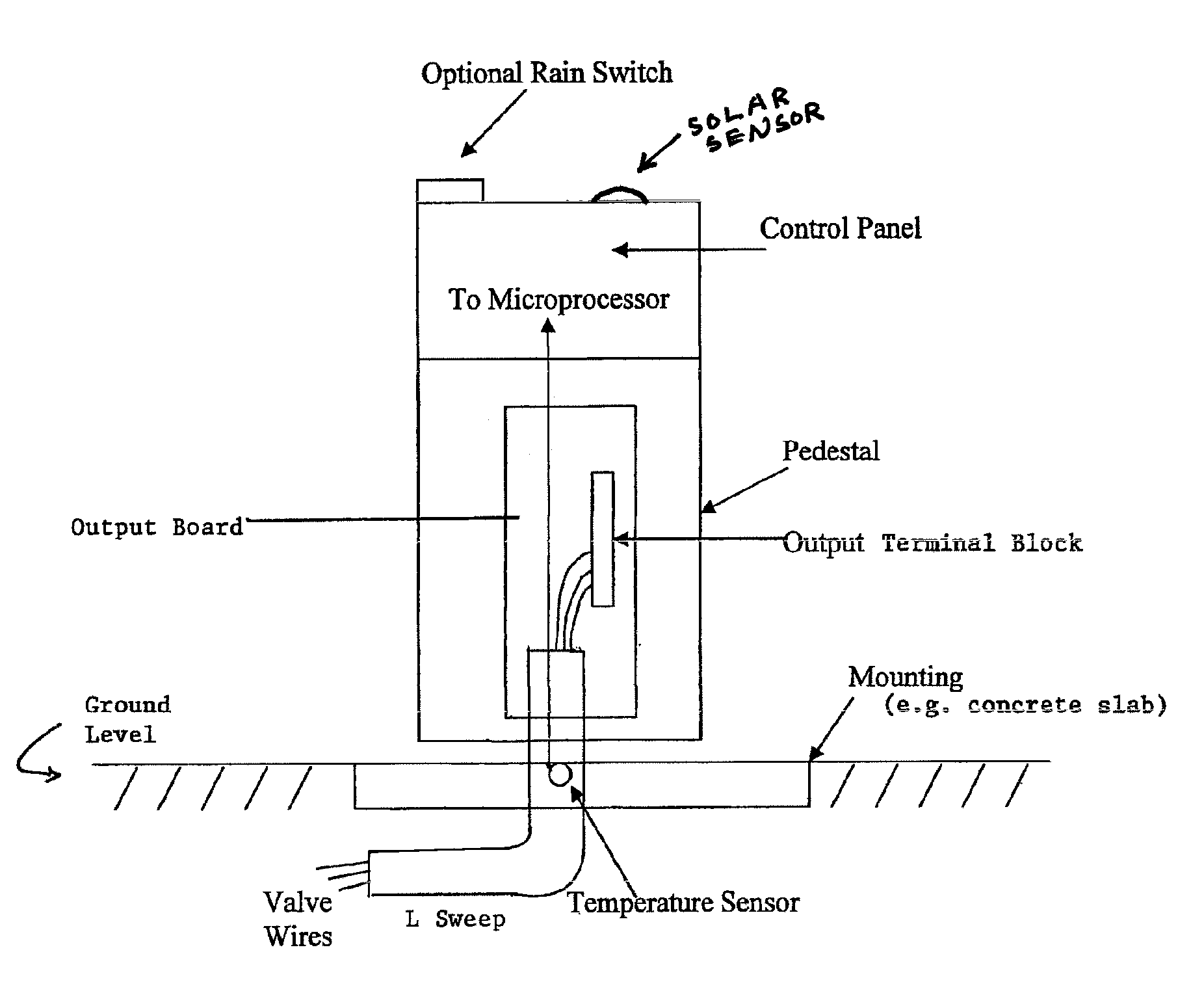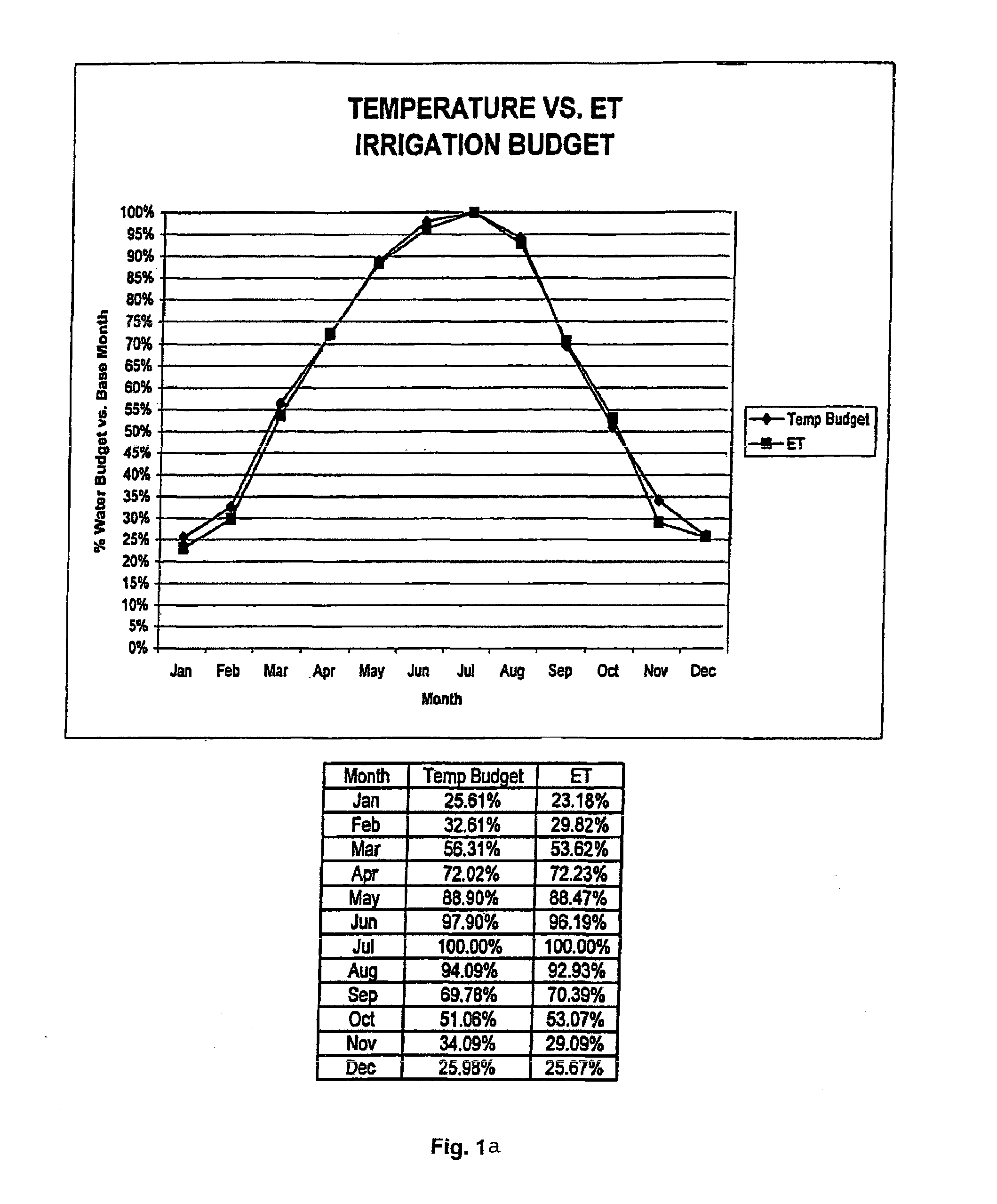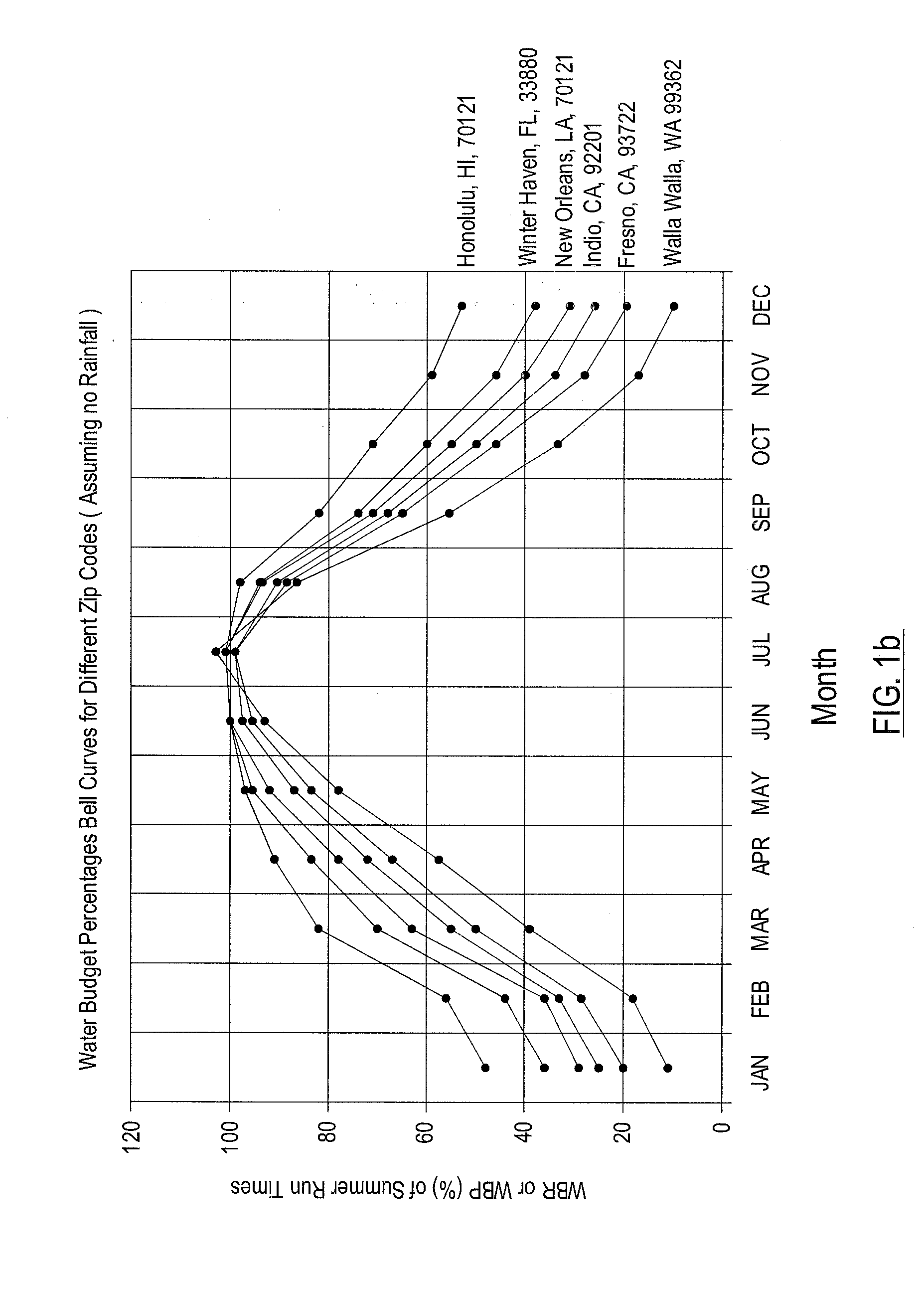Landscape irrigation management with automated water budget & seasonal adjust, and automated implementation of watering restrictions
a technology for landscape irrigation and automatic water budgeting, applied in the direction of computer control, program control, instruments, etc., can solve the problem that the plug-in cannot communicate with certain models of the host controller, and achieve the effect of simple implementation
- Summary
- Abstract
- Description
- Claims
- Application Information
AI Technical Summary
Benefits of technology
Problems solved by technology
Method used
Image
Examples
example 1
Use of Temperature Budgeting within a Controller, without The Use of any Form of ET
[0178]The following example is provided for illustrative purposes only and without limiting the appended claims. This example assumes that the operator has already determined the preliminary irrigation schedule using any number of commonly available methods, such as personal experience, or from the system designer.
[0179]Assume for the purpose of this example that an irrigation controller embodying the present invention is to be installed in Fresno, Calif., at 10:15 a.m. on Feb. 15, 2004. However, this method can be used anywhere in the world. The zip code is a convenient way in the U.S. and that is why it is used. The operator installs the controller and enters the current time, date, month and year. If he is outside the U.S., he enters the expected average summer high temperature and the latitude. As an example, assume that somewhere in Southern Europe, the average July high temperature is 98° F. in ...
example 2
Use of Stored Historical Et in Determining the Water Budget Percentage without Calculating Et within the Embodiments
[0188]The historical ET data shown in FIG. 1A is the same as FIG. 1 of parent U.S. Pat. Nos. 7,058,478, 7,266,428, 7,844,368 and of pending application Ser. No. 12 / 955,839 from which this application claims priority. While no ET calculation is performed by any embodiment of the present invention, stored historical ET data can nevertheless be used in embodiments of the present invention in determining the water budget percentage (WBR). It is to be appreciated that historical ET is only used—not calculated—by any of the embodiments herein. Stored historic geo-environmental data could consist of monthly, weekly, or daily ET data and temperature data for a given geographic location, and may be identified, for example, by the zip code or latitude and longitude, etc.
[0189]The following example of determining a water budget percentage using historic ET is provided for illustr...
example 3
Determining a Water Budget Percentage Using Soil Moisture Sensors
[0198]The following example of determining a water budget percentage using soil moisture sensors is provided for illustrative purposes only and without limiting the appended claims. In soil moisture sensing applications, a similar (but not identical algorithm) may be used. For example, historic soil temperature and moisture data can be provided to an irrigation or soil moisture sensing controller. Current soil temperature and moisture data is then provided on a real time basis from soil sensors and compared to the historic data for that location for that time or day of the year. A water budgeting percentage can therefore be calculated by comparing the current soil moisture and temperature data to historic soil moisture and temperature data for that location, which are considered geo-environmental data. This calculation yields a percentage which can then provide the amount of irrigation needed to replenish the root zone...
PUM
 Login to View More
Login to View More Abstract
Description
Claims
Application Information
 Login to View More
Login to View More - R&D
- Intellectual Property
- Life Sciences
- Materials
- Tech Scout
- Unparalleled Data Quality
- Higher Quality Content
- 60% Fewer Hallucinations
Browse by: Latest US Patents, China's latest patents, Technical Efficacy Thesaurus, Application Domain, Technology Topic, Popular Technical Reports.
© 2025 PatSnap. All rights reserved.Legal|Privacy policy|Modern Slavery Act Transparency Statement|Sitemap|About US| Contact US: help@patsnap.com



